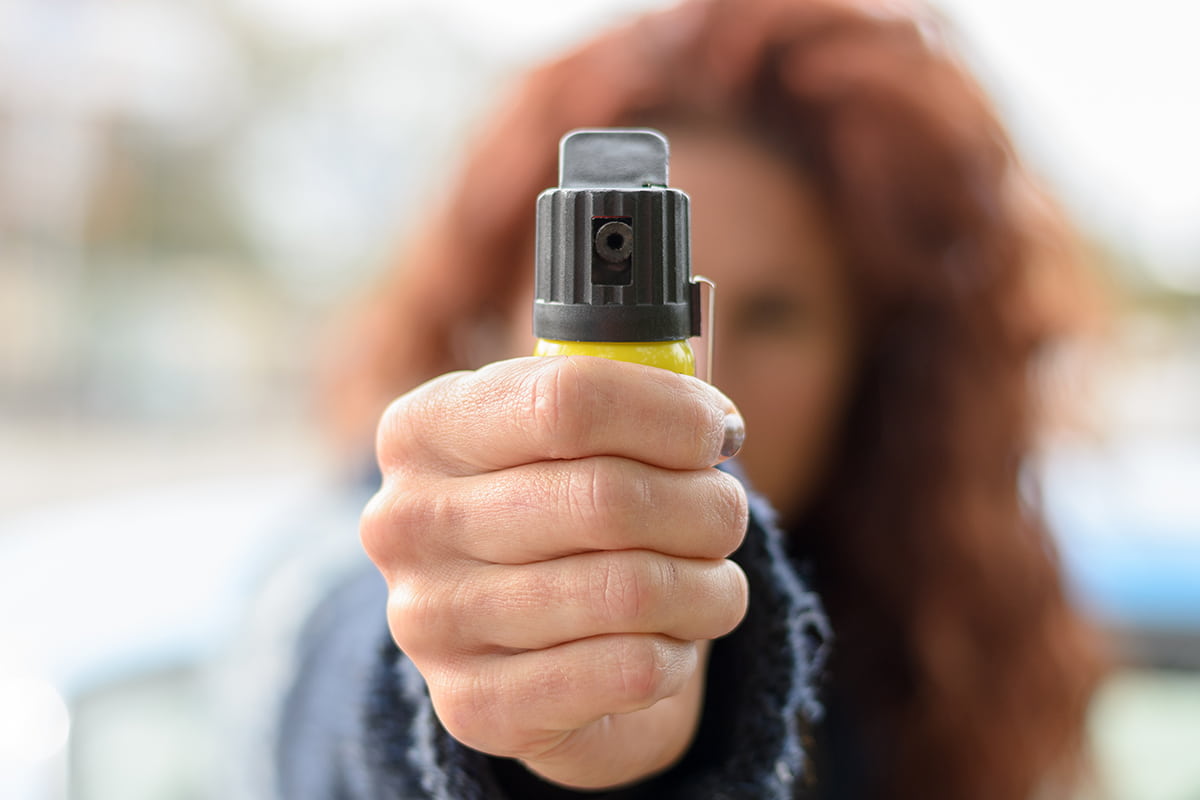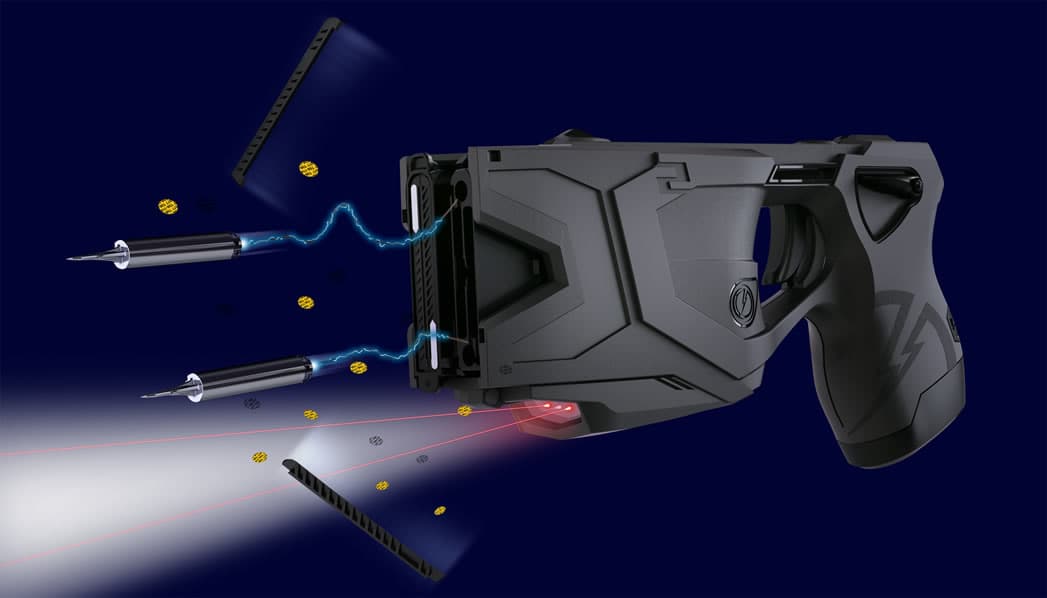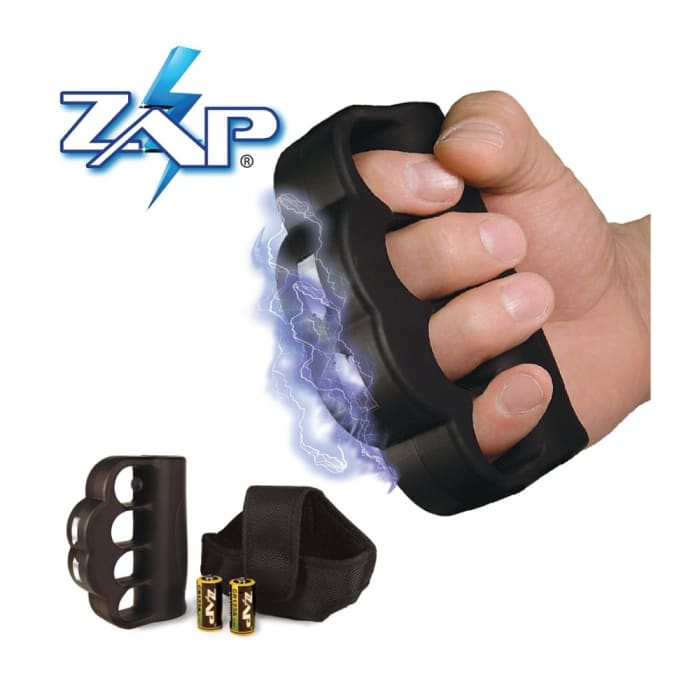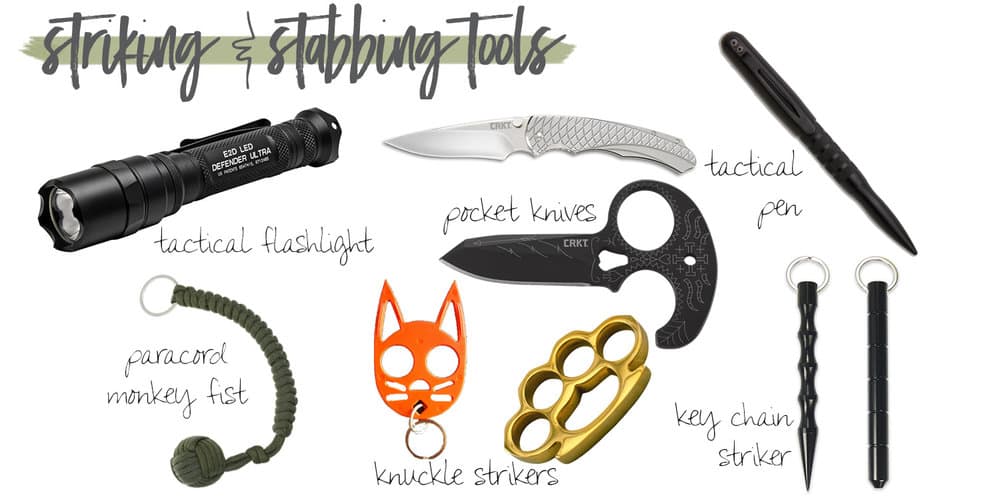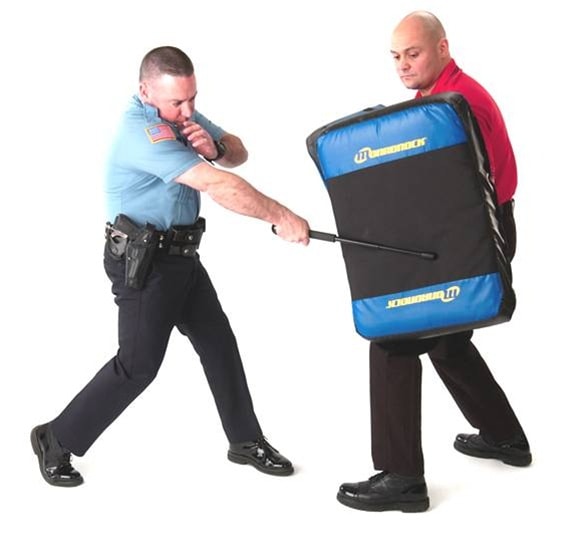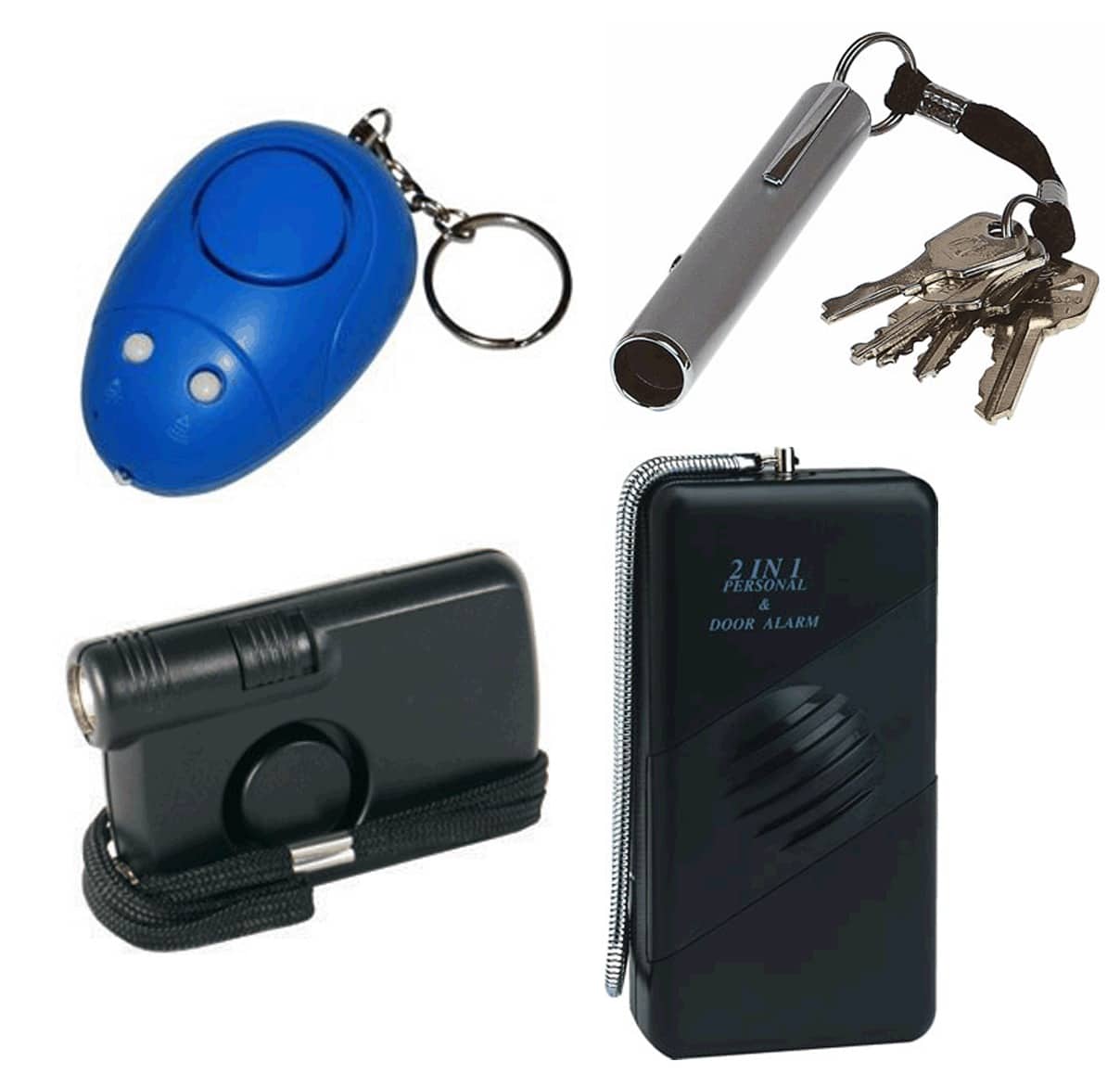Self-Defense Products Buyer's Guide
Posted by Ulrich Faircloth on 3rd Dec 2017
Self-Defense Products Buyer's Guide
Which self-defense tool and non-lethal weapon is best for you? You need personal defense products that are going to effectively protect yourself and your loved ones from violence. You have likely heard about all the different non-lethal self-defense product options: pepper spray, stun guns, TASERs, expandable batons, personal alarms as well as self-defense striking tools like kubotans, tactical pens and self-defense keychains.
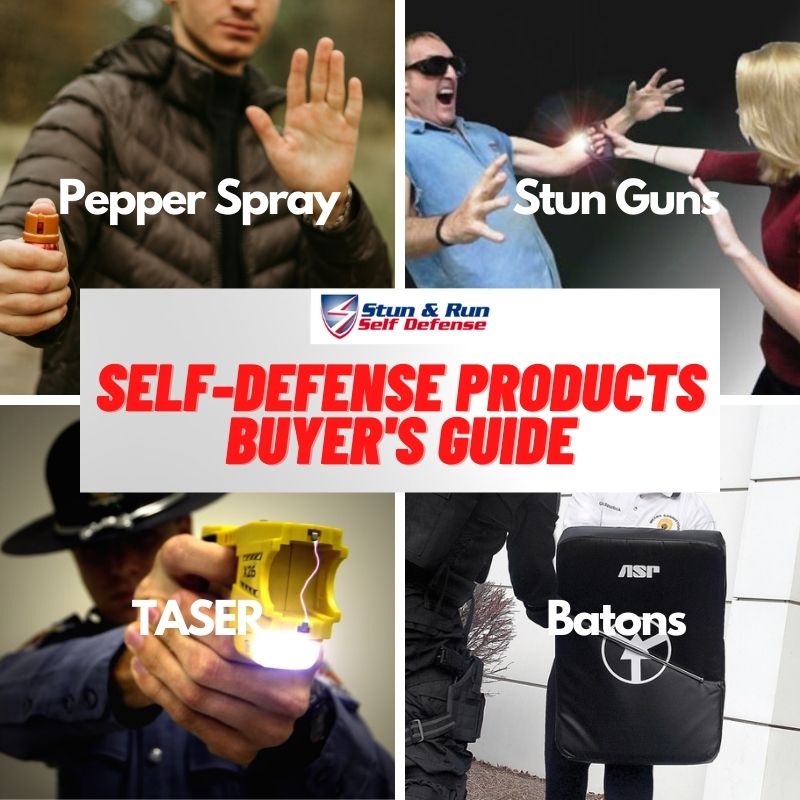
How to Choose the Best Non-Lethal Tools and Personal Self Defense Weapons
Buying and investing in your safety is a daunting task. This self-defense products buyer’s guide is developed to help you best choose what product to purchase.
We will rank the most effective or recommended tools based on professional experience and end with the least effective.
While learning about your self defense options, you will want to keep in mind your circumstances, what your comfortable with, and your skill level.
Five Self Defense Product Variables We Will Focus on: Effectiveness, Range, Ease of Use, Legalities and Cost
About Pepper Spray
By far the most commonly known self-defense product, pepper spray is also our top choice when it comes to personal protection. There are a number of reasons why it (also known as OC spray or defense spray) is a mainstay on a police officer’s duty belt a common choice for women.
EFFECTIVENESS:
The take-down power of pepper spray is well-documented. The oleoresin capsicum (OC) is what makes it effective. OC is an inflammatory agent. It swells up the mucous membranes in the eyes, nose and throat.
This inflammatory response restricts airflow in the lungs, making it difficult to breathe; causes involuntary closure of the eyes, temporarily blinding a person for up to 15 minutes; and searing pain, which usually lasts up to 45 minutes. There is an added effect of panic or anxiety over the fear of not being able to breathe properly. No permanent damage is done.
And because OC is an inflammatory agent and does not rely on pain—like the irritants CS or CN (tear gas; see: Pepper Spray vs. Mace )—in order to work, it serves as an effective choice against people who are under the influence of drugs or alcohol. It works immediately, whereas tear gas can take 5-30 seconds to kick in. When combined with tear gas, pepper spray becomes even more potent.
RANGE:
The beauty of pepper spray is that it gives you DISTANCE
between you and your attacker. When facing a threat, your goal is to widen the
gap rather than close it. Pepper spray gives you, on average,
an effective range of 8-12 feet (most
assaults happen within 6-8 feet).
Some units—depending on the brand,
canister size and dispersal pattern—provide greater ranges.
EASE OF USE:
Aiming is the main issue with pepper spray. Most dispersal patterns, like the stream or gel, require hitting the ocular area for the greatest effect. A fogger does not required aim; the assailant merely has to breathe the particles it in. Properly holding and deploying the spray, in addition to positioning, are other important things to keep in mind.
LEGALITIES:
Besides a few restrictions in certain states on formulation (e.g. no tear gas, OC % limitations), shipping (e.g. New York, Massachusetts, Hawaii, Alaska) and canister size, pepper spray is legal in all 50 states in the U.S. In several other countries it is considered a “dangerous weapon” and banned, legal with restrictions or fully legal. See our Pepper Spray Laws & Restrictions page for full details.
COST: A good can of pepper spray
will cost between $10 - $20, but larger canisters and other types of designs
(such as the
Kimber
Pepper Blaster
or Mace Pepper
Gun
can be upwards of $60 depending on the product. A JPX Pepper Gun can
cost up to $420.
PEPPER SPRAY - RANKING: #1
Overall, it is hard to top pepper spray. The range it provides, ability to shut an assailant down (even those under drugs), its widespread legal status, low cost and ease of use make it the perfect self-defense tool for protecting yourself.
RECOMMENDATIONS:
DPS Pepper Spray is by far the best brand of defense spray that we carry.
If you are on a budget, the DPS Pepper Spray – ¾ oz unit will serve you well. The volume or amount of spray you will have is low, but it is just enough to subdue an attacker.
We recommend getting a 2oz can of the DPS X-Stream Range spray, since it provides plenty of shots.
Finally, if you want the best of the best then the DPS Black Label is the way to go. The OC formulation on its own is deadly enough, but combined with 2% CS tear gas…its unstoppable. Prison inmates call it “ The Silver Bullet” for a reason. They won’t touch the stuff.
BONUS: Purchase any pepper spray product and get our Pepper Spray 101: How to Protect Yourself at a Distance training course for FREE!
About TASER's
While everyone knows about pepper spray for general
self-defense, the
TASER is
the most iconic piece of equipment on a police officer’s duty belt. People know
all too well about the electric “ride” that this electronic control device
(ECD) gives to anyone unfortunate enough to be shocked by it. Like the stun
gun, it works off high voltage and low amperage.
EFFECTIVENESS:
Unlike its close-range cousin, the stun gun, the TASER works on neuro-muscular incapacitation (NMI) to immobilize a threat.
The device hijacks the central nervous system of the body, interfering with the electrical signals that allow movement. The TASER jams up those signals (think of a broken utility line), which causes involuntary muscle contractions. These contractions last as long as the device cycles, typically 5-30 seconds at a time depending on the model.
If you press
the trigger again, the device will go through another cycle. Once the cycle
stops, the target is able to freely move their body again without damage. 30 seconds
gives you plenty of time to get away to safety.
While the TASER does have a high rate of effectiveness, it does not always
work. Although the percentage is low, there are some people who have not been
affected. If both dart probes do not penetrate the skin, the circuit will not
complete and the target will be unaffected. TASER darts can penetrate up to 2
inches of clothing, so if you are handling someone wearing thick material then
you will be in trouble.
RANGE:
The TASER can effectively hit a target from up to 15 feet away, giving the end user plenty of distance from an assailant. Law enforcement has access to dart cartridges that reach 21, 25 and 35 feet. A TASER can also become a stun gun through “drive stun” mode, when the cartridge bay is empty (or full, in the case of the X2 model).
EASE OF USE:
Target acquisition for the TASER is easy enough. The attached laser sight helps you mark your target, but the crucial piece is that BOTH dart probes have to hit in order for the TASER to work its magic. If you get 1 out of 2, the circuit will not complete and you will be helpless unless you follow up with a drive stun.
LEGALITIES:
As of 2022, TASERs are now fully legal. A handful of states however, such as Wisconsin and Michigan, require a CCW permit or have additional restrictions to lawfully purchase and retain an electroshock weapon. Thanks to Caetano vs. Massachusetts , TASER bans have been overturned in all states. See our Stun Gun/TASER Laws & Restrictions page for more information. TASERs cannot be transferred out of the country without an export license. They are illegal in many different countries.
COST:
The biggest issue with the TASER is cost. The cheapest unit will run you $400 and the highest unit will cost $1400. The high cost keeps this device out of the hands of the average person.
TASER - RANKING: #2
There is a reason why police officers rely so much on the TASER while on duty: it just works! But not always, as we have seen; there are clear advantages and disadvantages.
While TASER is a high-cost product, the involuntary muscle contractions, long
shock cycles and manufacturer guaranteed replacements (in case you have to use
it) make it a very solid choice for self-defense.
RECOMMENDATIONS:
If you are on a budget, go for the TASER Bolt (discontinued) or the TASER Pulse. The Bolt is the go-to choice for women due to its portability. It runs for 30-second cycles. The Pulse is great for conceal & carry or gun enthusiasts. The sleek, ergonomic design makes for easy handling. The Pulse runs for 30-second cycles.
We recommend getting the TASER X26P. The TASER X26C has long been the workhorse for police departments worldwide. The X26P is a SMART Weapon upgrade over its analog predecessor, featuring charge metering for optimal charges, ambidextrous hanlding and Central Information Display (CID) for displaying critical elements.
Our premium option is the TASER X2, which has IPX weather-proofing for extreme temperatures, two-shot capability for multiple targets, warning arc for de-escalation, dual lasers for improved accuracy and technology for optimizing current output on a target. Runs for 5-second cycles, up to 30 seconds with each trigger pull.
BONUS: Purchase any TASER product and get our Electroshock Weapons: Stun Guns & TASERs training course for FREE!
About Stun Guns
Often confused or used interchangeably with its long-range cousin, the TASER, the stun gun is a hand-held pain compliance tool that delivers a high voltage, low amperage shock.
EFFECTIVENESS:
The most important thing to understand about a stun gun is that it is a pain compliance tool. It does not work off involuntary effects like pepper spray or the TASER, which makes it less effective than these two.
The biggest problem is dealing with people who have a high pain tolerance or who are under the influence; pepper spray is the better option here. There are various stun gun myths that you should look out for. The sight and sound of a stun gun, however, works well at intimidating criminals and scaring off hostile animals. And it will make a person get off of you, as it is intended.
RANGE:
The stun gun requires direct contact with the threat in order for it to work. Some variations of stun guns come in the form of walking canes or batons, which give you greater reach.
EASE OF USE:
Stun guns are very easy to use. Aim for large muscle groups (chest, abdominals, biceps) or sensitive areas of the body (neck, groin). For the greatest effect, you must dig the stun gun into the body and hold for 3-5 seconds.
LEGALITIES:
In the United States, stun guns are now legal in all 50 states (with restrictions, based on state), as of April 2022. Some states, such as Wisconsin and Michigan, require a CCW permit to lawfully purchase and retain. Thanks to Caetano vs. Massachusetts , stun guns bans have been overturned, save for Michigan (where only TASERs are legal).
See our Stun Gun/TASER Laws & Restrictions page for more information. Stun guns cannot be transferred out of the country without an export license. They are illegal in many different countries.
COST:
Stun guns can range from $15, for cheap units, to over $100 for more sophisticated or high-end units.
STUN GUNS - RANKING: #3
Stun guns have always been a go-to choice for people in the realm of self-defense. While they work as effective pain compliance tools and psychological devices (sight and sound of electrical arc), they have little effect on persons who have a high pain tolerance or whom are under the influence of drugs or alcohol.
Because stun guns lack the involuntary effects
and effective range of pepper spray and TASERs, they get ranked at number #3 on
our list. Make sure to pair them up with a pepper spray for optimal usage.
RECOMMENDATIONS:
Omega and ZAP are two of the best stun gun manufacturers. Yellow Jacket is also good.
Our budget option would be the ZAP Stun Gun . It is a standard hand-held unit that is easily concealable. Uses batteries and comes with a belt-loop holster for carry.
We recommend getting the Omega Super Stunner , Omega’s best stun gun.
Our premium option is the Omega Star Warrior Stun Baton , which gives you more reach than a regular stun gun. Featured in a number of movies (e.g. Demolition Man), is in use worldwide by a number of militaries, law enforcement, security and animal control agencies. Uses two 9 volt batteries.
BONUS: Purchase any stun gun product and get our Electroshock Weapons: Stun Guns & TASERs training course for FREE!
About Self-Defense Striking Tools
Small, hand-held self-defense striking tools come in a variety of designs: the tactical pen, the kubotan and self-defense keychains. These tools work well for personal protection, as they are quickly accessible and low-key enough to carry discreetly (element of surprise).
Tactical Pen:
The tactical pen is made out of metal, typically aluminum but sometimes titanium or stainless steel.
It can be used for writing, but also for self-defense. It can be used to stab and slash critical areas of the body (face, eyes, throat) or strike at pressure points (neck, nose, wrists) for pain compliance. Some pens are designed with additional features as glass breakers or DNA collectors.
Kubotan:
The kubotan predates the tactical pen. It features built-in grooves for effective handling when striking. Because the point of the kubotan is blunt, it is designed primarily for use on pressure points. It is very useful for getting out of locks or holds, just by digging the end-point into an attacker’s arm or wrist.
Self-Defense Keychains:
Self-defense keychains are simply striking tools that you can place on your set of keys for easy access.
Some of the most popular ones come in animal variations, like a dog or cat. Some are made out of metal, but most are designed with hard ABS plastic. The points are pointed enough for use on pressure points and they can be used to stab or poke attackers.
EFFECTIVENESS:
Like the expandable baton, self-defense striking tools are impact weapons. They rely on pain to be effective. You can use them to strike, stab and slash an assailant. They work very well, and you can incapacitate someone if used the right way. As mentioned, tactical pens work well for collecting DNA from an attacker or breaking a window (for pens that have these functions).
RANGE:
All self-defense striking tools are close-quarters combat weapons. You have to be on someone in order to use them.
EASE OF USE:
All self-defense striking tools are easy to use, but they do require that you know which pressure points or critical areas of the body to capitalize on. Practicing your hand techniques is essential for proper utilization.
LEGALITIES:
Kubotans, tactical pens and self-defense keychains are considered weapons and like expandable batons they fall into a pretty grey area legally. In some states they fall under the same classification as brass knuckles and are therefore illegal; the most notable states being CA, MA and NY.
Security checkpoints like federal buildings and the airport (do not bring on carry-on) are areas where they can be confiscated. Since these tools are so low-profile, there are likely few restrictions in other countries as well. Please be sure to do your independent research before buying these products.
COST:
The various self-defense striking tools are very inexpensive, ranging from $5 to $15 for most products. High-end tactical pens can cost $30 or more.
SELF-DEFENSE STRIKING TOOLS - RANKING: #4
Self-defense striking tools, tactical pens and self-defense keychains in particular, are extremely useful and cost-effective tools.
The
problem is that they require you to be up-close and personal with an attacker,
as well as being knowledgeable of the various pressure points on the body.
While these tools have great utility, they lack range and rely on pain
compliance.
Most
self-defense keychains and kubotans are off-brand, but a handful of companies
like
Smith & Wesson, UZI and PoliceForce make tactical pens.
RECOMMENDATIONS:
Our budget option would be the Wild Kat Self-Defense Keychain. If you love cats, then you will adore this cute self-defense keychain. Easily attaches to keys for easy access to protection. Multiple colors to choose from!
We recommend getting the Brutus Bulldog Self Defense Keychain . Great for anyone that loves dogs! The ABS plastic is very durable and sharp enough to poke an attacker with and hit pressure points.
Our premium option would be the Police Force Tactical Pen w/ LED Light and DNA Collector . It is a great pen that has all the functions you need: bright LED light, DNA collector and blunt point for breaking glass.
BONUS: Purchase
any self-defense striking tool and get our
Introduction to Non-Lethal Self-Defense training course for
FREE! Enclosed
is a very basic overview of kubotans, tactical pens and self-defense keychains.
About Expandable Batons
Expandable batons have a lot of history behind them. They’ve gone through variations as truncheons, blackjacks, saps, clubs and others. They have been historically perceived as a reflection of a police officer’s authority, as well as symbolizing police brutality. But because of their notoriety, batons make for an excellent psychological tool of intimidation for use in self-defense.
EFFECTIVENESS:
The expandable baton is first and foremost an impact weapon that relies on pain compliance in order to be effective.
A well-placed strike can cripple an assailant, unless they are under the influence of drugs (which will be less of a worry for a regular person, on average). Excessive force can become an issue, even for a civilian. Understanding the Use of Force Continuum and applying your level of force properly is paramount.
RANGE:
Expandable batons can be as short as 12 inches or as long as 32 inches, which give you a fair amount of distance. A baton is still considered a close-quarters weapon, however.
EASE OF USE:
Expandable batons require a great deal more training than other less-lethal options due to their potential to become lethal weapons when misused (e.g. hitting someone in the head). The baton requires proper positioning and application of torque when swinging.
Batons come in three variations (based on ASP): Friction-Loc, Lever-Loc and Disc-Loc.
Friction-Loc batons are the most commonly used. They close by banging the end on a hard surface, like concrete. Lever-Loc batons are closed by holding each shaft firmly and twisting counter-clockwise. Disc-Loc batons are the newest and by far the easiest variation to handle, opening and closing at the push of a button. They are excellent in environments where access to a hard surface is not available (e.g. water, sand, etc.).
LEGALITIES:
Batons are in a very grey area when it comes to legalities. There are no clear-cut restrictions in many states. It is difficult to discern if expandable batons fall under terms like “blackjack”, “sap” or others in various areas.
It is best to consult with your local police department or an attorney before committing to purchasing a baton. The expandable baton is given much more prejudice than other tools for the fact that you can bludgeon someone with it. Do extensive research. Known states where batons are illegal are California, New York, Massachusetts, Pennsylvania and Washington DC.
COST:
Expandable batons are more expensive than pepper spray and stun guns, but less than TASERs. A basic, low quality economy baton will be about $20; the mid-tier will be around $50-$70; and upper-tier will be $100+.
EXPANDABLE BATONS - RANKING: #5
While expandable batons are powerful psychological weapons
and effective pain compliance tools, they are also on the highest end of the
less-lethal use of force continuum. Improper use can turn the baton into a
lethal weapon. The high level of training required, legal restrictions and
limited range put this self-defense product lower on our list.
ASP, Monadnock and Smith & Wesson are widely known for their high
quality expandable batons.
RECOMMENDATIONS:
Our
budget option would be the Expandable
Keychain Baton
. It is accessible on your keychain, fairly good quality and
great for reacting quickly to a threat. This is a
friction-loc baton.
We recommend getting the Smith & Wesson Tactical Expandable Baton . Great quality, excellent handling and comes with its own holster for carry. This is a friction-loc baton.
Our premium option would be the ASP Talon Baton. As a disc-loc baton, you can easily retract the baton with the push of a button; no banging on a hard surface required! ASP batons are of superb quality, and the ASP Talon is no exception. The best we can recommend for police and security personnel.
BONUS: Purchase any expandable baton and get our Introduction to Non-Lethal Self-Defense training course for FREE! Enclosed is a very basic overview of expandable batons.
About Personal Alarms
The purpose of the personal alarm is to deter attackers. A criminal wants to draw the least amount of attention to him or herself. It’s sort of like being a lion in the wild; make too much noise and your prey will get away. The personal alarm causes that disturbance, alerting other people nearby of the situation. This is useful for women, college students and elderly persons who fear they might be attacked.
EFFECTIVENESS:
A good personal alarm depends on how loud it is. Sound levels are based in decibels and alarms typically range from 80 – 140 dB. Obviously the higher the number, the louder an alarm will be. If an alarm is not loud enough, it will not be very effective at warding off an assailant or potential threat. 120 - 130dB is what we typically recommend for this device.
Unlike other tools, the personal alarm is not a self-defense weapon. It is best to pair it with a pepper spray or stun gun for it to be most effective. The primary drawback is that it is practically useless when in isolation. If you are in a parking lot or other cut-off space and no one is around, then the personal alarm will do you little good. There must be people around to take notice.
RANGE:
Sound travels very far. The louder your personal alarm, the further the sound will travel. This is why we recommend getting a unit between 120-130 dB.
EASE OF USE:
Personal alarms are extremely easy to use. The best thing about it is that they have an activating pin. When the pin is removed, the alarm will continue to sound until the pin is placed back in.
This easily brings attention to your situation and makes things difficult for your attacker, who has now lost the element of surprise. If you wanted to try and use it offensively, you could place the alarm directly in an attacker’s ear to cause pain if they get too close.
LEGALITIES:
Personal alarms are legal in all 50 states and worldwide, since they are not a weapon.
COST:
Personal alarms are inexpensive, usually ranging from $10 – $20.
PERSONAL ALARMS - RANKING: #6
The personal alarm is excellent for taking away an
assailant’s element of surprise. What it is not good for is self-defense. In an
isolated situation it is almost useless, especially if the attacker is willing
to take the chance of assaulting you versus getting caught. The personal alarm
is a useful tool to have, but it
MUST be
combined with another product in order to give you the results you want: the
ability to get away.
RECOMMENDATIONS:
Most personal
alarms are off-brands. We have a few recommendations.
Our budget option would be the 130dB Mini Personal Keychain Alarm . This small alarm is very loud and fits perfectly on a keychain. It has a low-level flashlight built in as well. This is one of our favorites.
We recommend getting the 2 in 1 Personal Door Alarm . It works great if you are staying in a hotel or if you are out and about. And it is loud! This alarm is great for keeping intruders away. It uses two 9 volt batteries.
Our premium option would be the UFO Multi-Function Personal Alarm . This 120dB unit can be used as a burglar alarm, door/window alarm, drawer/cupboard alarm, personal alarm, bag alarm or as a flashlight.
BONUS: Purchase any personal alarm and get our Introduction to Non-Lethal Self-Defense training course for FREE! Enclosed is a basic overview of personal alarms.
In Conclusion
As you can see, there are a TON of self-defense products to choose from. Hopefully this guide helped you determine what to pick, based on your circumstances and what you are comfortable with. The in-depth online training courses (remember, free with purchase of a product!) will delve further into what you need to know about everything. If you have any questions, feel free to email at ulrich@srselfdefense.com or call us toll-free at 1-844-788-6786.

 Menu
Menu
 Item(s)
Item(s)

